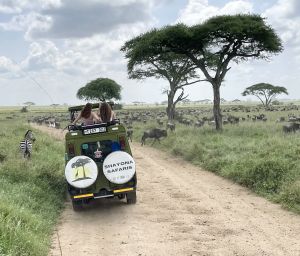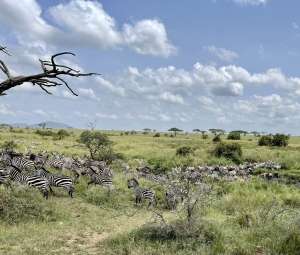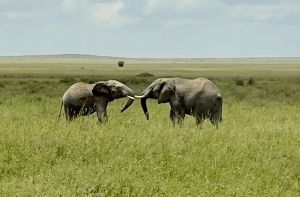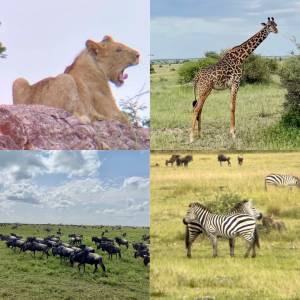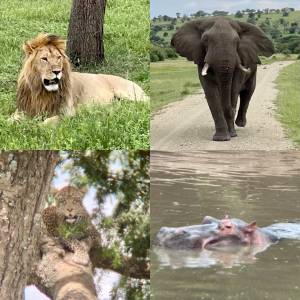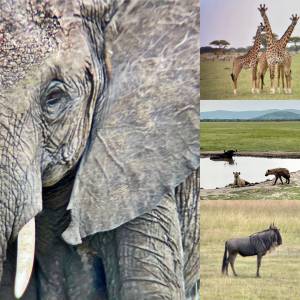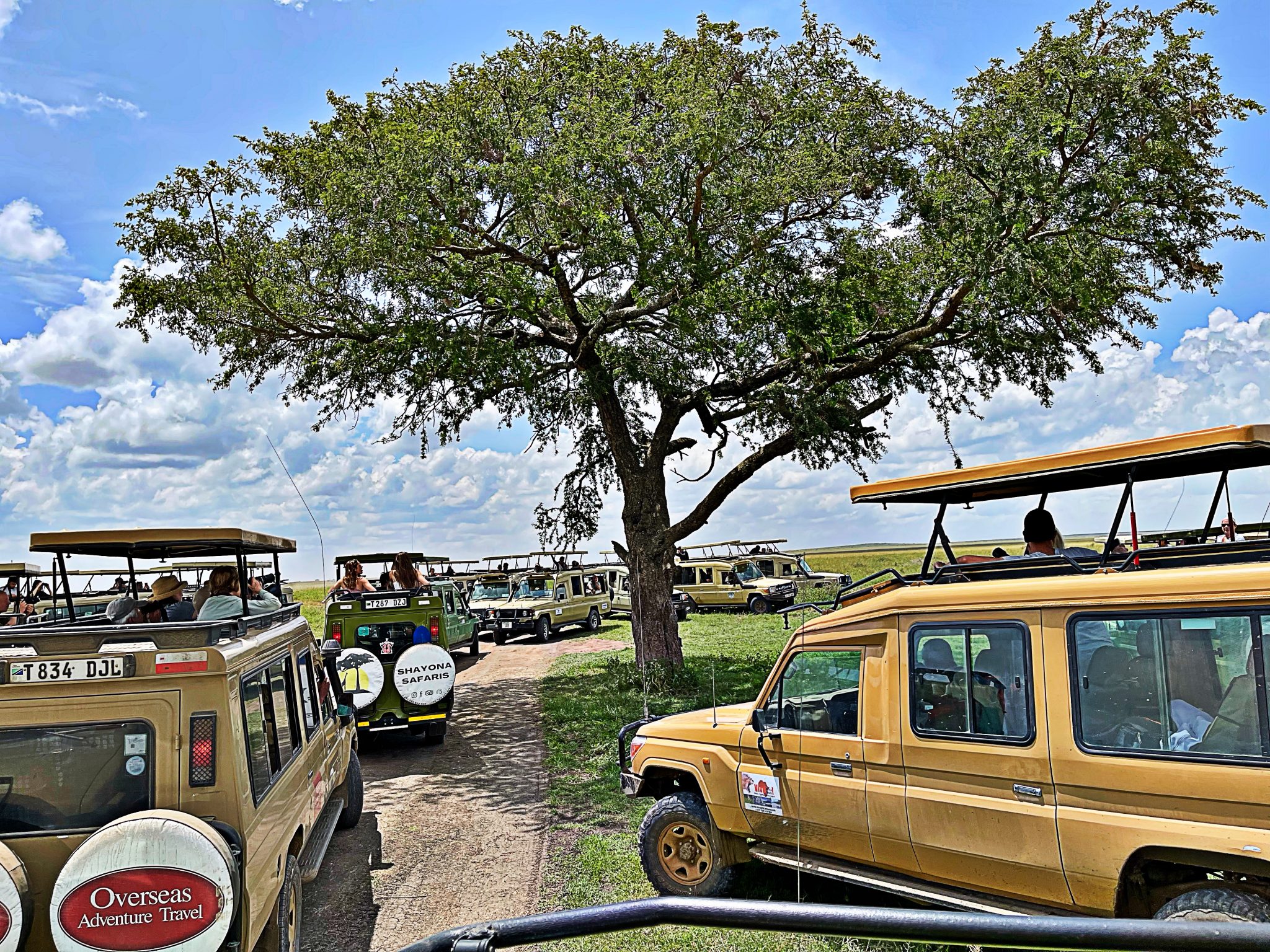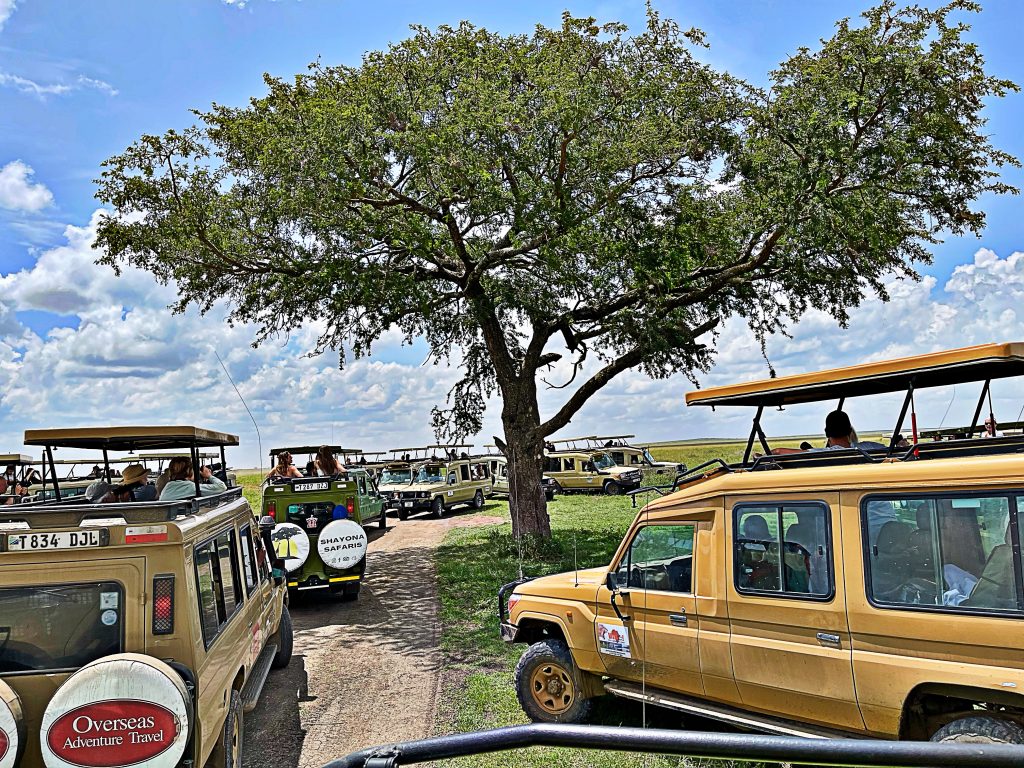Juliet Amadeo ’24, comes to realize that although her time in the Serengeti has been “spectacular” she misses the Tanzanian food and culture, and most importantly, the Mainsprings community.
Coming into the Safari, our group read a chapter of Curtis Keim’s book Mistaking Africa about the stereotype of “unchanging Africa.” This reading essentially grouped the African expectation into two categories: the horrors of Africa (wars, poverty, corruption) and the beauty of African culture and landscape. Today, we had the opportunity to experience and challenge the second stereotype.
We started our day by piling into three separate Toyota Land Cruisers after a delicious breakfast of bananas and crepes at Papa’s. After a long morning drive to the gate of the Serengeti, a ranger told us the history of the 14,763 square kilometer national park. Interestingly, the word “Serengeti” itself was westernized from its original Masai pronunciation and meaning. The Sirigeti or “endless plains,” began for us at the gate of the north end of the park. We were greeted with baboons, or baka in Masai, and acacia trees as far as the eye could see. We stood out of the roof and watched as the bumpy roads led us farther and farther into, what felt like, the middle of nowhere. A very exciting sighting of zebras and wildebeests, at first, quickly became common background. We were on the hunt for the big five: elephant, buffalo, leopard, rhino, lion.
First, we spotted the African elephant. Its sheer size amazed all of us with ears bigger than banana leaves. Two elephants wrestled in the brushes besides our trucks. Thankfully, we escaped unharmed and continued our sightseeing hunt. Grazing besides the herds of zebras, wildebeests, antelope, and the occasional warthog, we finally saw our second big five – the water buffalo! Their big horns reflected sunlight–bright spots amid an endless grassy landscape.
Our safari continued with countless giraffes, secretary birds, hippos, crocodiles, meerkats, and dik-diks. However, my personal favorite part of the day was our third big five sighting – the lion. Fortunately, we were able to see both the male and female lions on the same day. We saw the females lounging in the sun on their majestic pink Kopje, like “Pride Rock” in the Lion King, and the males resting in the shade of an acacia. We “toasted” (applied filters to) photos throughout the day but the best by far was the toasted lion (included in this blog). We drove for a couple more hours until we eventually climbed to our spectacular, unfenced safari lodge. As we were escorted to our rooms, the park rangers told us never to walk alone without a chaperone at night – we would run the risk of running into baboons!
After a quick dip in the swimming pool, we dressed up for dinner and had a buffet dinner loaded with passion fruit juices and butternut squash soup. As we chatted at the table, we all came to the same conclusion: this tourist-created vision of Africa is not the experience we will be remembering from our trip. As we ate tourist food and were surrounded by western people and customs, we began to miss the incredibly special experience we were living back at Mainsprings. Thinking back, again, to our readings from Mistaking Africa, our group realized that the “African Experience” of all these tourists is only a curated idea of Africa. At Mainsprings, we enjoy traditional Tanzanian food, meet Tanzanian people in their community and experience genuine Tanzanian culture. Truly, my memories from this trip will not be the spectacular animals I saw but, instead, the wonderful people who have taught me so much.
